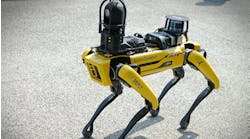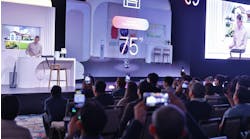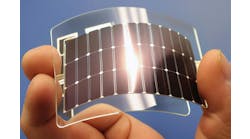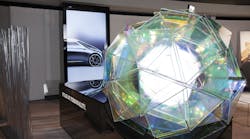Like Tim “The Tool Man” Taylor and Montgomery “Scotty” Scott, the medical device industry is screaming for more power. Is the energy storage sector listening?
In the field of emerging biomedical technology, a major point of focus is on wearable, implantable and standalone devices, which are perpetually growing in complexity and shrinking in size. The quantum advancements have injected a lot of hope and optimism into the healthcare community, but there’s still one major problem. These highly sophisticated devices need an equally sophisticated power source.
According to a recent analysis by Lux Research, “existing battery solutions barely satisfy the demands for increased functionality and power in existing medical devices and may have slowed the shift toward personalized health care in many areas of medicine.”
For those in the battery storage industry, please know that this report, “Powerful Medicine: Opportunities for Pairing New Bioelectronics with Innovative Energy Storage,” isn’t intentionally trying to polarize your community. (It did just call you out for halting the progress of modern medicine in revolutionary, life-saving ways, though.)
Source: Lux Research
The findings demonstrate there’s a lot of work to be done. The report is charging current Lithium Ion developers with possessing “mediocre technology and business execution, highlighting the need to push beyond today’s incumbent technologies.”
The solution? “To succeed, Li-ion battery companies would need to develop flexible form factors without sacrificing energy stored, sharply raise energy density with a push towards next-generation designs like ceramic or polymer solid-state electrolytes, and also enhance safety,” the report says.
The researchers did identify a few “dominant” companies that center on niche offerings and alternative storage options, such as thin-film and cylindrical cells.
One of these is WiTricty, which has partnered with medical component manufacturer Greatbatch to create wireless charging systems for medical devices, such as surgical tools and defibrillators.
“You might have to change the battery pack [of a surgical tool during an operation], which is a pretty complex process because they have to be sanitized and sterilized,” WiTricity sales engineer Colin McCarthy explained to EE Times. “With wireless power you could just be putting a tool down on a wireless power tray – it really streamlines the process, and surgery, and eliminates the need to swap out the battery packs.”
WiTricity's WiT-5000 can deliver wireless power to multiple medical devices at once.
That’s not the only positive to come out of the report. Even though Lithium-Ion batteries are lagging behind now, in a decade’s time, they are projected to double in in energy density to over 1,200 Wh/L. Specific energy is also expected to double, surpassing 400 Wh/kg, and the battery lifespan could exceed 25 years, five times the current standard. Safety should also rise from a “mediocre to satisfactory” rating to “excellent.”
If you’d like to learn more, register for Lux’s complimentary webinar, "Comparing Apple Watches and Oranges: Looking Past Shiny Gadgets to Find Real Opportunities in Wearables," on September 15 at 11:00 EDT.










